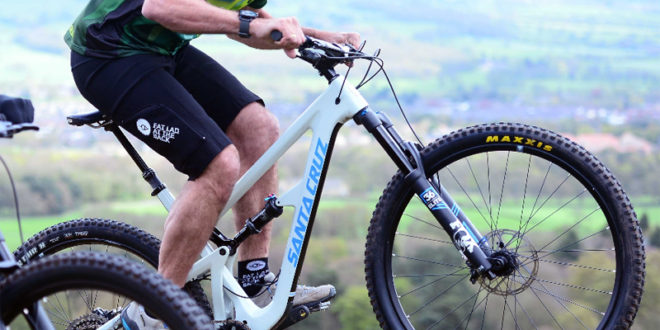Yorkshire-based brand Fat Lad At The Back is primarily known for its road apparel, which is available in a vast range of sizes and cuts.
The brand, which has gained a large following due to its inclusive attitude and successful group rides, has now branched out into mountain bike clothing. We caught up with FLAB’s Emma Dickson to hear more about the new range and why the brand is expanding outside of its primary field.
Why did FLAB choose to grow into the MTB sector?
We decided to launch into the MTB sector due to huge customer demand – we have a community of almost 40k very engaged fans on Facebook and we were regularly asked if we had an MTB range or were planning on doing one. We didn’t really want to do one for the sake of doing one – just shoving our logo on a pair of ‘ordinary’ mountain bike shorts for example. When FLAB first launched it was to solve a genuine problem – i.e. there was no cycle wear in larger sizes and we wanted to take the same approach with our mountain bike range – its only worth doing if we can solve a problem.
Do you think the same issues surrounding cycle-wear are true of the MTB sector, with regards to ill-fitting clothing?
Yes definitely, the main issue we’ve found from talking to larger mountain bikers is that the legacy of mountain bike wear came from a very grunge/skater culture which means that the shorts are very low slung with loads of pockets. We discovered that a huge issue was ‘bum cleavage’ – hence why we’ve called the MTB shorts ‘cracking’.
How was the process different catering to MTB riders?
The design process is different between road and MTB mainly by creating a tailored garment for use in the ideal mountain bike riding position and needs when compared to road.
The ideal MTB riding position is slightly more upright and therefore, the body curve from seated saddle plain(level) to upper body is less severe, therefore the panelling curves were created to reflect this.
The cut and fit is designed to “flatter with function”. Principally fit and move as comfortably as a lycra short within a looser fit garment.
What research was undertaken in the development process?
Research, basically, finding out from various mountain bikers what the drawbacks were to “traditional” baggy mountain bike shorts, then throw out the rulebook and engineering out the drawbacks by applying new principles.
Theoretical physical models were made and tested to trial the new thinking, once the theory was confirmed and suitable fabrics sourced, final test samples were made, and confirmed, then on to production.
What materials were used in production?
The upper waistband is Silicone-impregnated Italian-woven soft stretch elastic, the Lycra upper features 210g power lycra, designed to offer support and adaptability. The lower fabric is Italian highly wear-resistant stretch fabric with ripstop and DWR treatment to repel splashes.
 BikeBiz Bicycle and cycling retail news
BikeBiz Bicycle and cycling retail news




